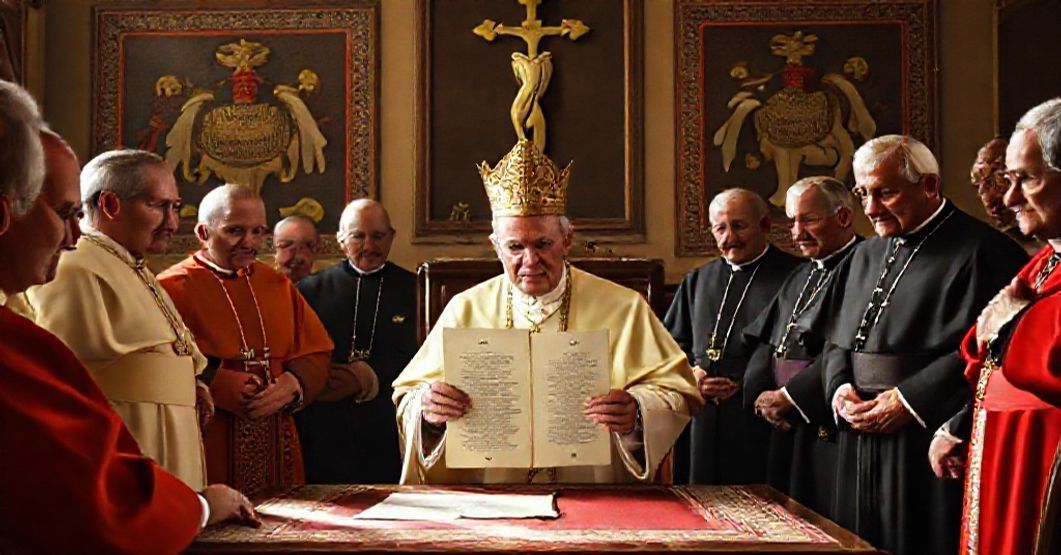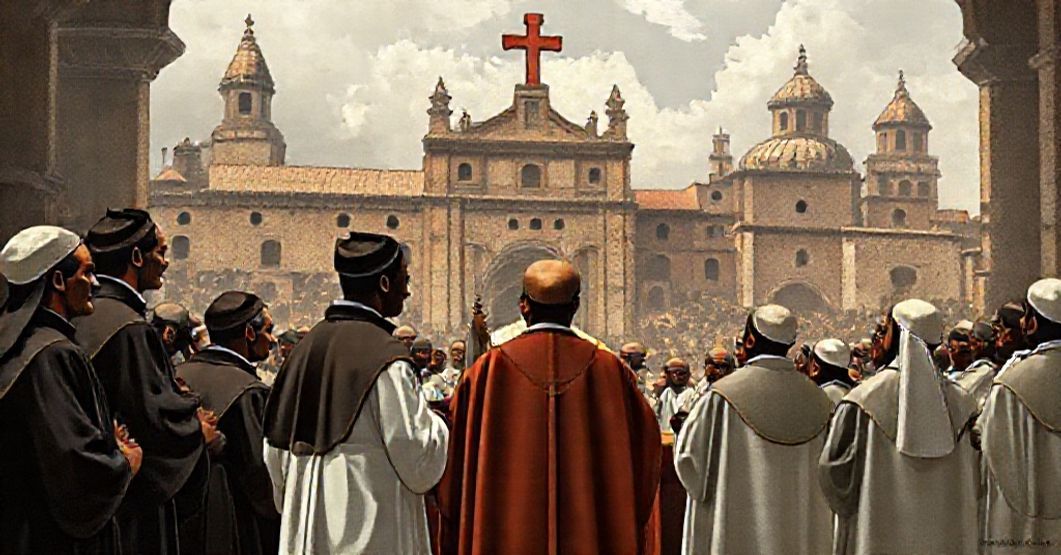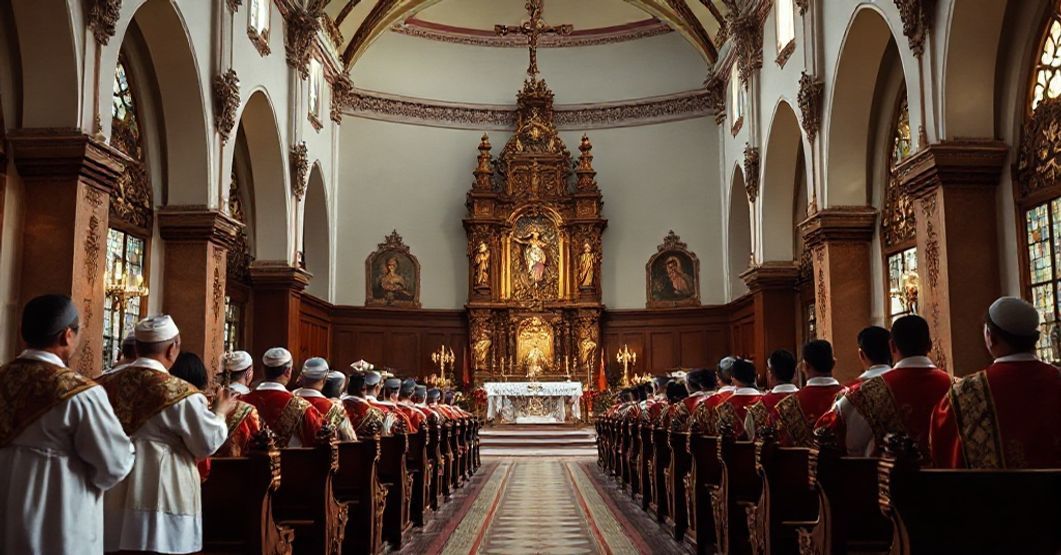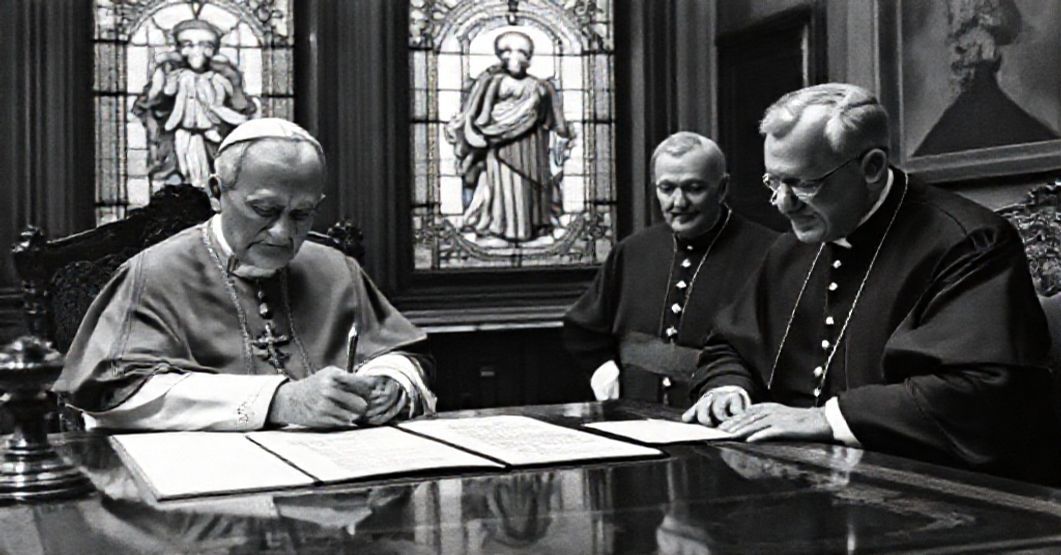Antipopes of the Antichurch



















Timeline of this heretical pontiff
Encyclical Letters
+ 15 posts1959
+ 7 posts1961
+ 4 posts1962
+ 2 posts1963
+ 2 postsApostolic Exhortations
+ 3 postsApostolic Constitutions
+ 93 posts1958
+ 6 posts1959
+ 87 postsMotu Proprio
+ 15 posts1958
+ 1 posts1959
+ 1 posts1962
+ 11 postsApostolic Letters
+ 151 posts1958
+ 4 posts1959
+ 63 posts1960
+ 78 posts1961
+ 1 posts1962
+ 4 posts1963
+ 1 postsSpeeches
+ 99 posts1958
+ 2 posts1959
+ 26 posts1960
+ 29 posts1961
+ 16 posts1962
+ 24 postsMessages
+ 6 posts1959
+ 4 postsHomilies
+ 4 postsLetters
+ 152 posts1958
+ 1 posts1959
+ 48 posts1960
+ 32 posts1961
+ 31 posts1962
+ 30 posts1963
+ 10 postsNot categorized
+ 1 posts1958
+ 1 postsNews feed


IQUIQUENSIS (1959.02.17)
The apostolic constitution “IQUIQUENSIS (ARICENSIS)” of John XXIII, dated 17 February 1959, is a juridical act whereby the Chilean ecclesiastical territory “Departamento civil de Arica” is detached from the diocese of Iquique (with a small exception around Camina) and erected as a new territorial prelature nullius, titled Arica, assigned its cathedral (St Mark the Evangelist), boundaries, subjection to the metropolitan of La Serena, norms for its revenues and seminary, transfer of documents, and execution clauses entrusted to Sebastian Baggio.


MUNDUENSIS (1959.02.19)
The text titled “CONSTITUTIO APOSTOLICA MUNDUENSIS” (19 February 1959), issued by John XXIII, announces the elevation of the Apostolic Prefecture of Moundou (in former French Equatorial Africa) to the rank of a diocese “Munduenis,” assigns it as suffragan to Fort-Lamy (Banguensis), entrusts it to the Capuchins, defines its cathedral, seminary, episcopal revenues, and subjects all governance to the Congregation of Propaganda Fide and common canon law, with the usual juridical formulae guaranteeing validity and execution. Behind this apparently technical act of ecclesiastical organization stands the programmatic transition from the integral missionary Kingship of Christ to a bureaucratic, geopolitical management of souls, preparing the way for the conciliar revolution that would soon enthrone man instead of Christ.


Botucatuensis (1959.03.07)
The document under consideration is an apostolic constitution of John XXIII, dated March 7, 1959, by which he purports to establish in the metropolitan church of Botucatu (Brazil) a collegiate chapter of canons. It sets the number and ranks of canons, regulates their liturgical obligations, assigns distinctive vesture, and provides that with the chapter’s erection the diocesan consultors cease in office; it delegates execution to the nuncio and wraps all in the usual solemn language of binding force and canonical penalties.


TUDENSIS (1959.03.09)
The Latin text labeled as an apostolic constitution “TUDENSIS” (9 March 1959) attributed to John XXIII concerns an apparently minor administrative act: it combines the historical title of the Diocese of Tui (Tudensis) with “Vigo” (Vicensis) and elevates the church of the Blessed Virgin Mary in Vigo to the rank of co-cathedral, granting the diocesan ordinary the cumulative title “Tudensis-Vicensis” and regulating canonical execution. Beneath the innocuous canonical verbiage, however, stands the signature and self-assertion of the first usurper of the conciliar revolution, sealing in juridical form the transition of visible structures into the hands of an emerging neo-church which will shortly enthrone the cult of man against the reign of Christ the King.
Varia
Announcement:
– News feed –implemented
– Antipopes separate web sites with their all documents refutation – in progress
